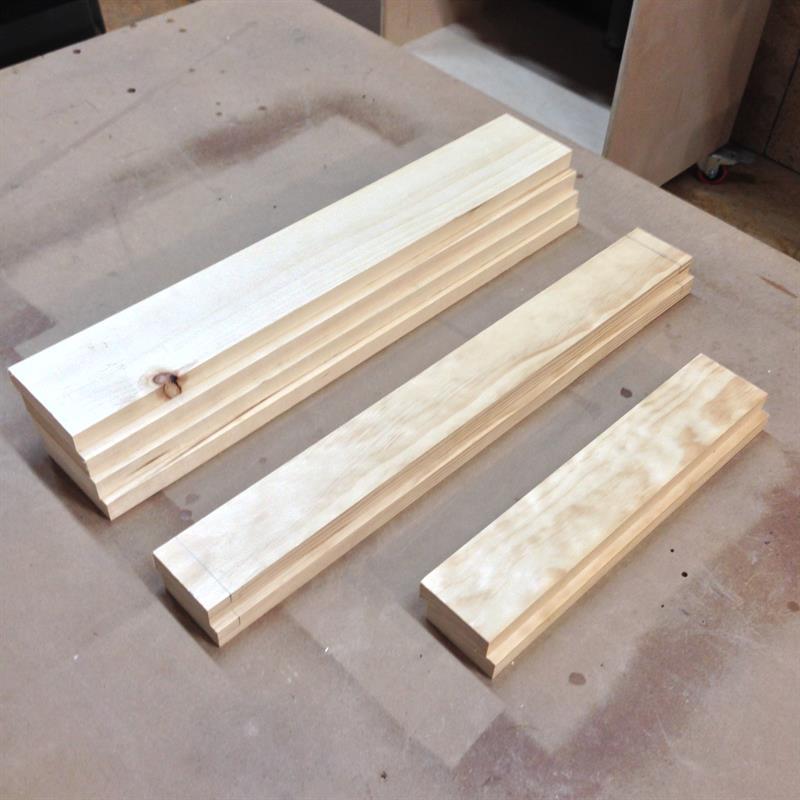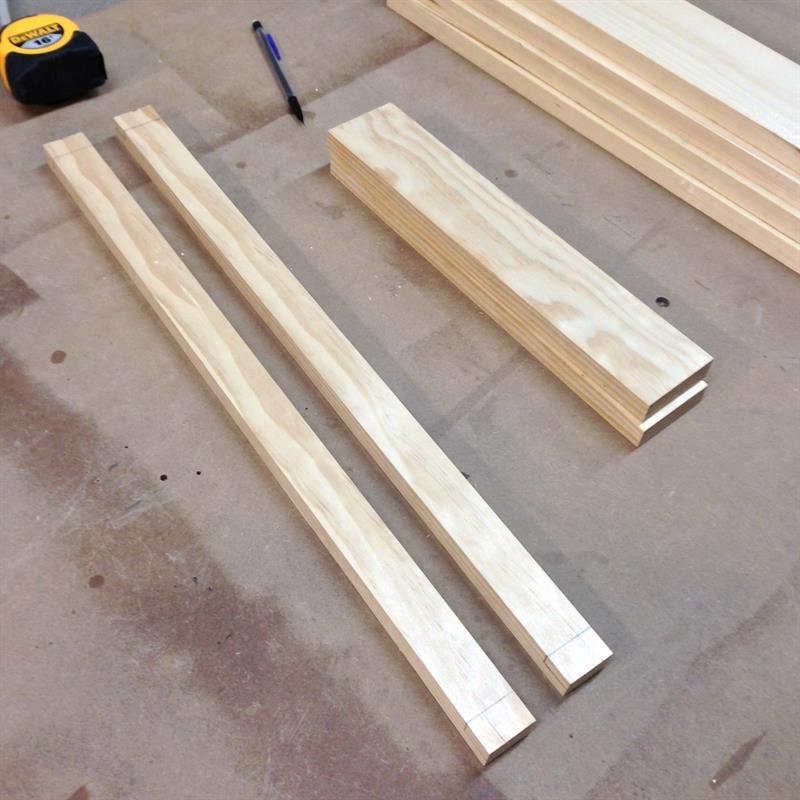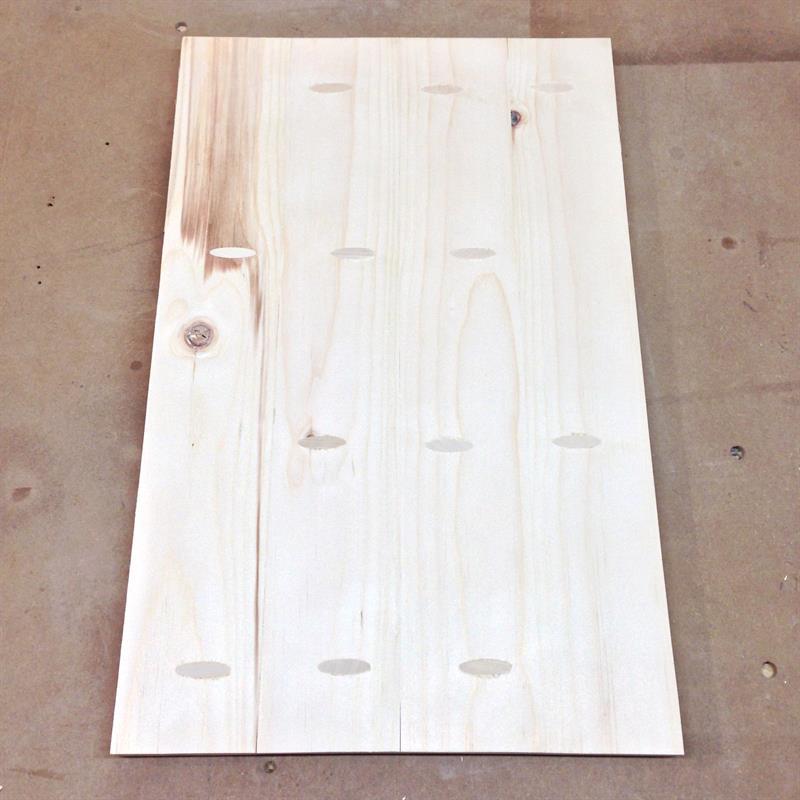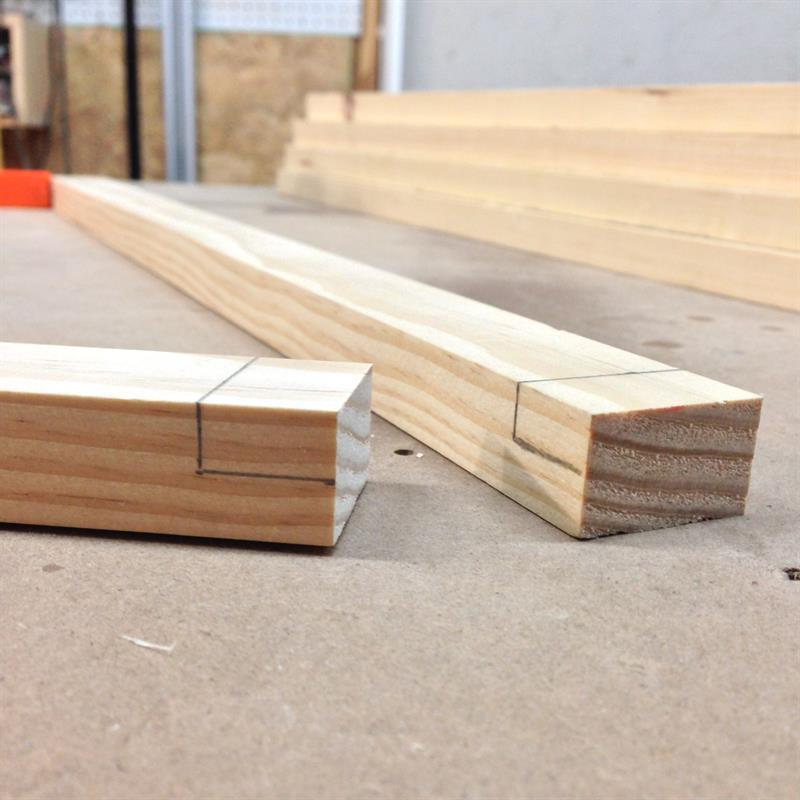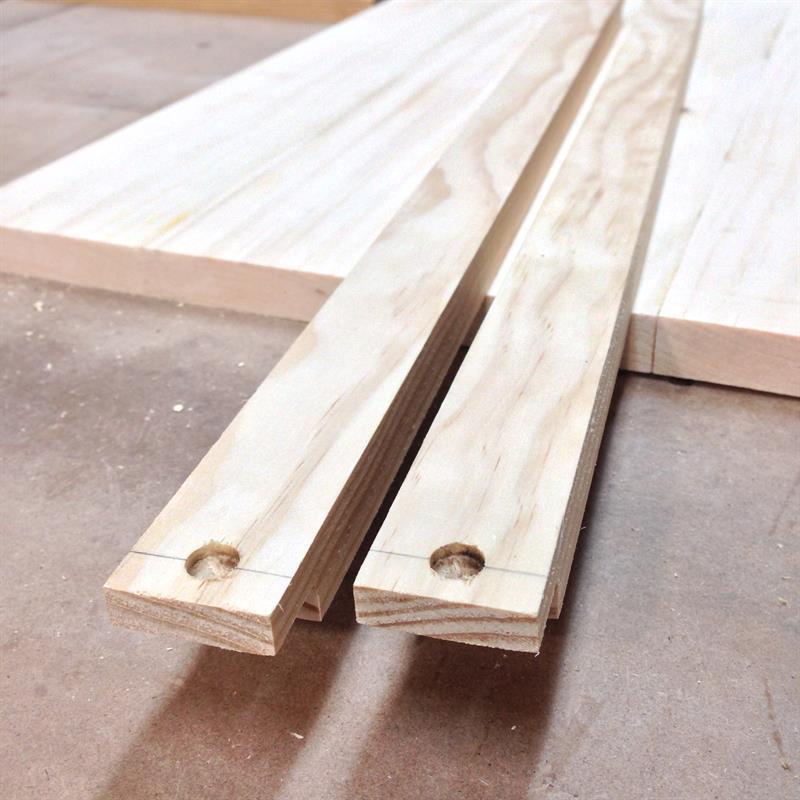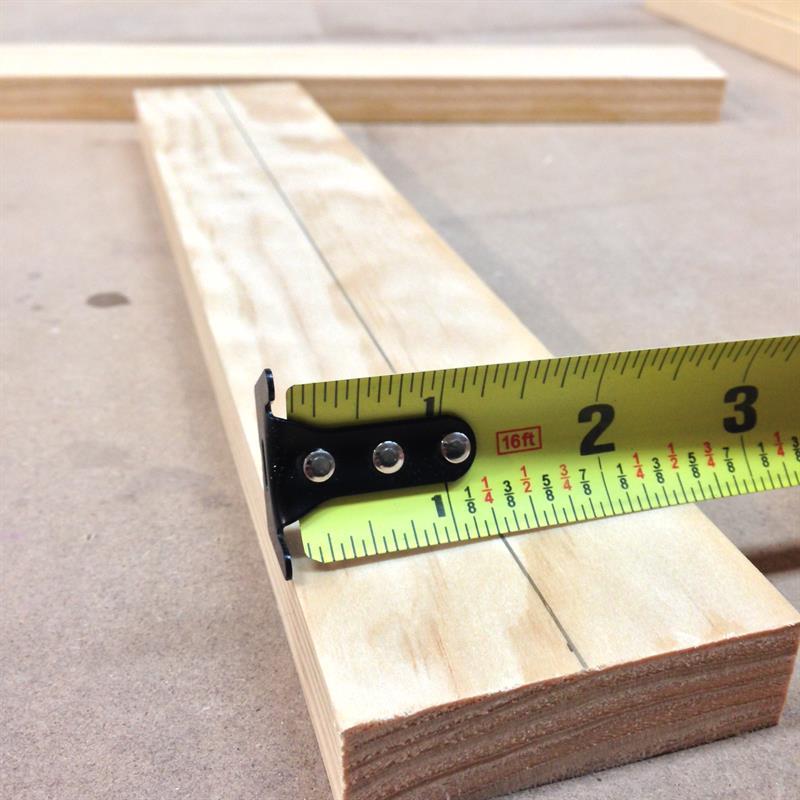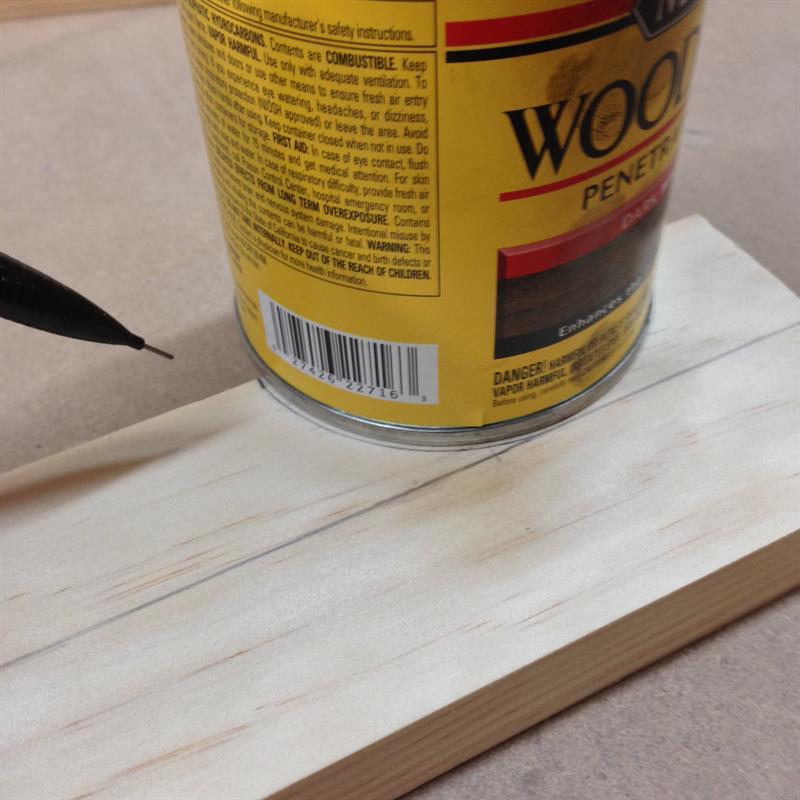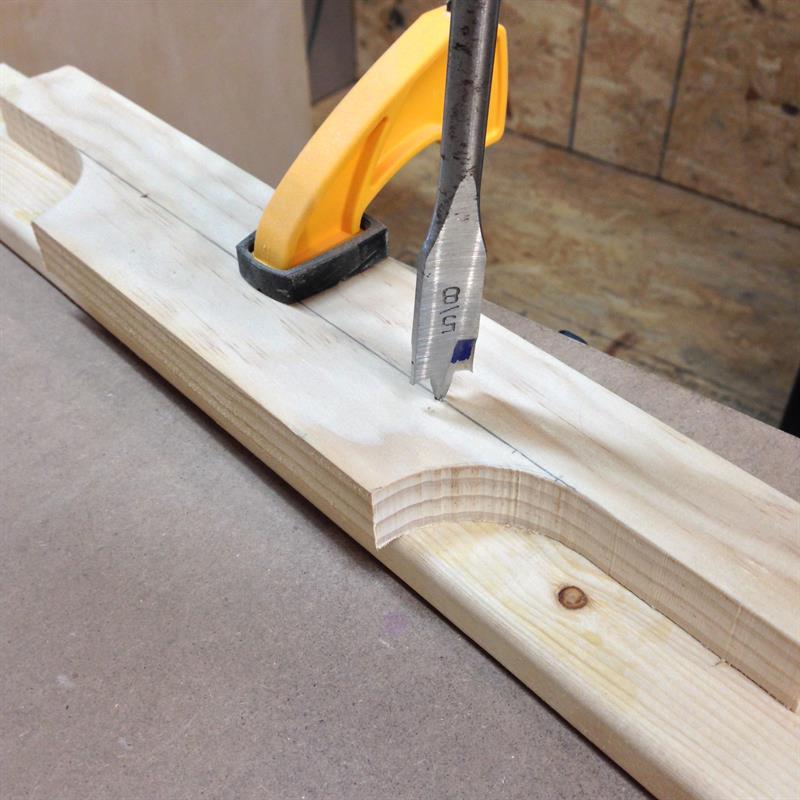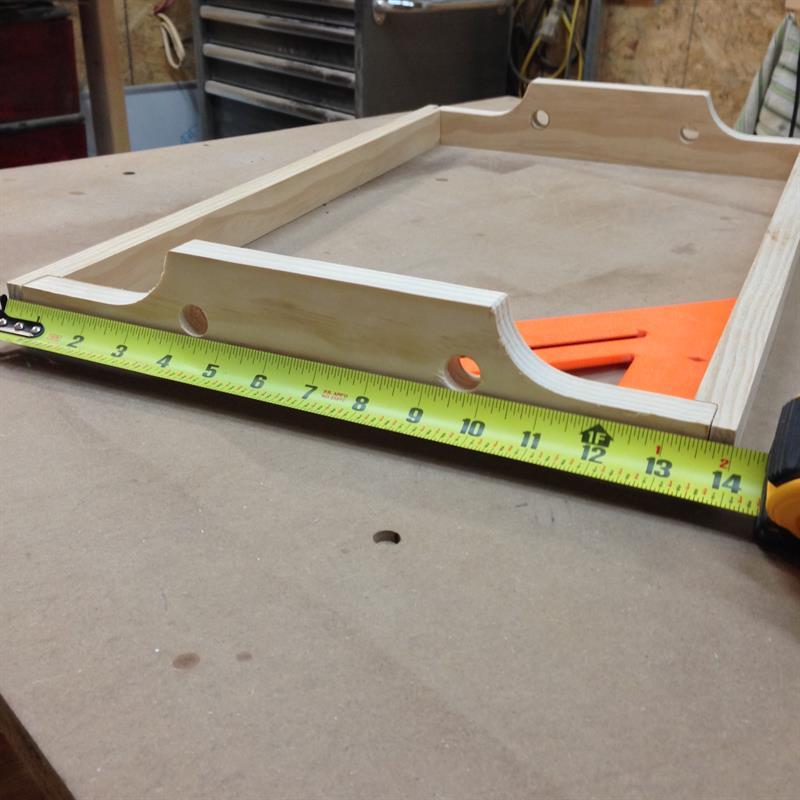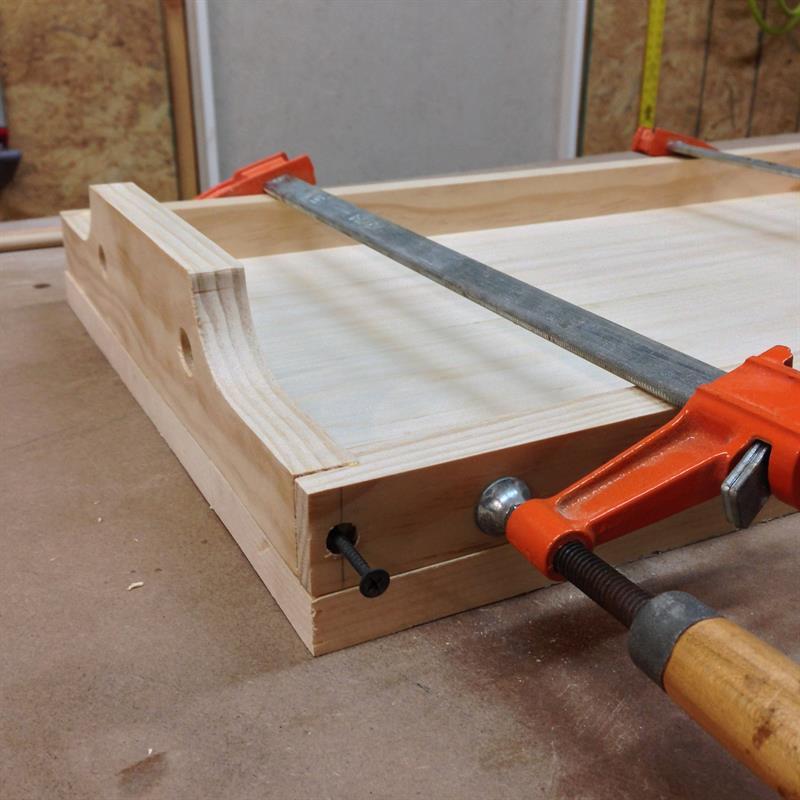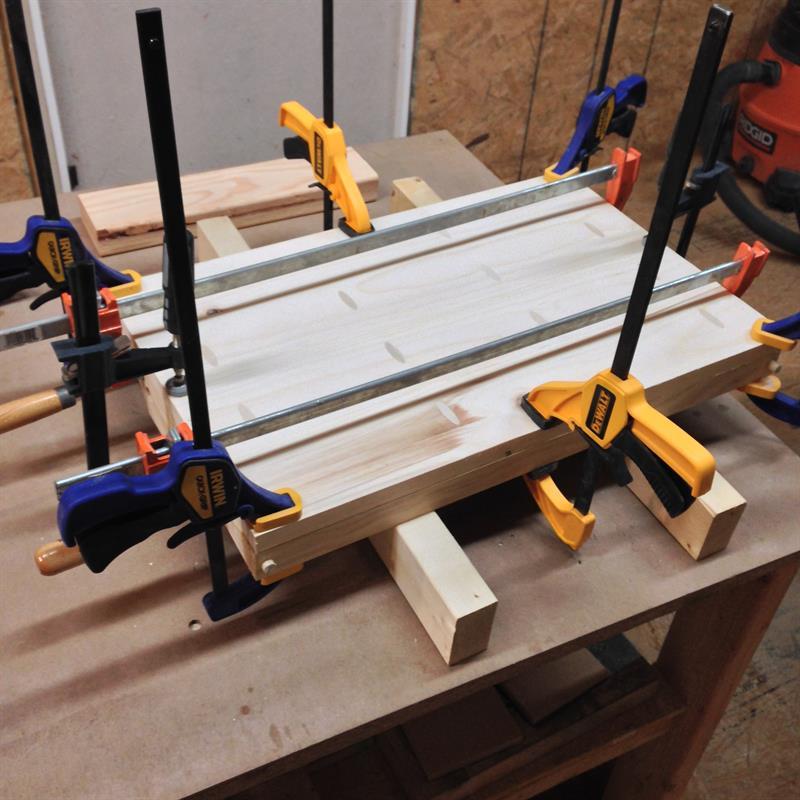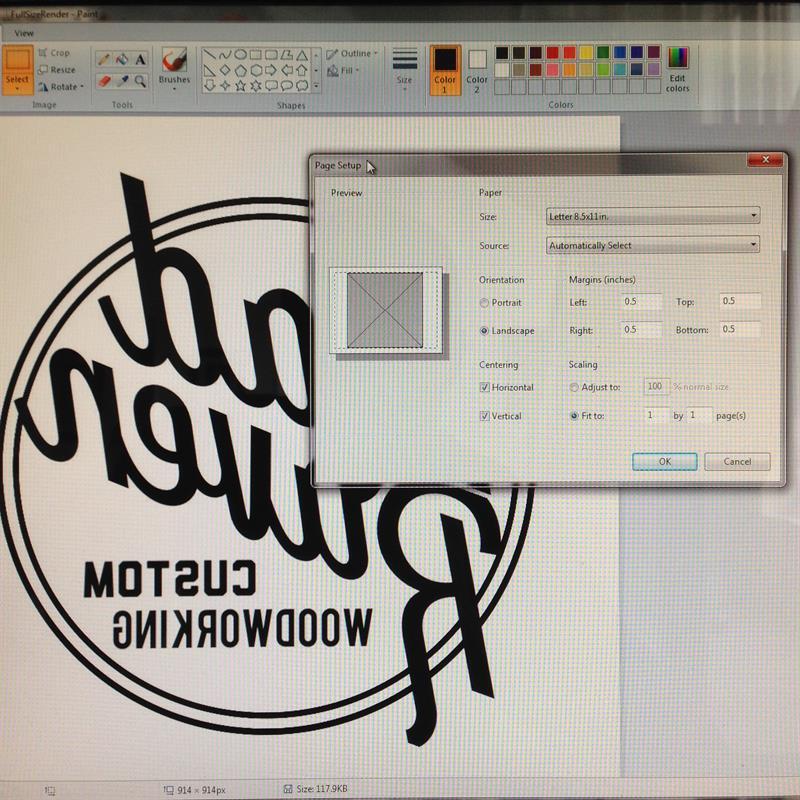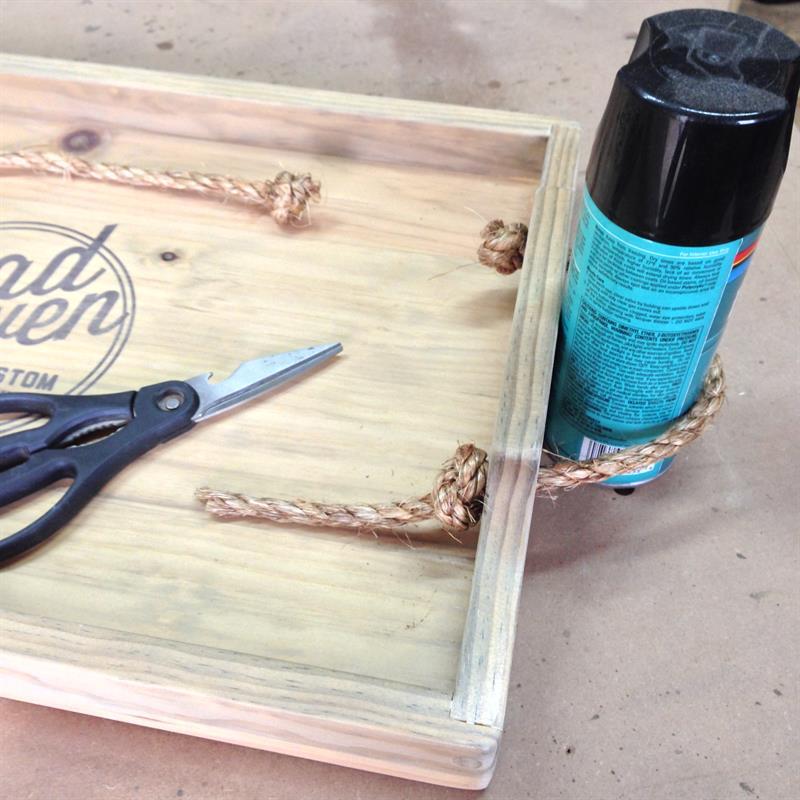Custom Graphic Tray with Rope Handles
By Mad Raven WoodworksAn inexpensive, large tray of easy/moderate difficulty. All you really need is 2 boards, rope, and hardware! This project features single rabbet corners, custom ink transfer, and unique rope handles. Great for serving and displaying! (22"x14"x2")
Directions
-
Cut Boards to Length
Be sure to review the entire plan before buying supplies. You may want to do something differently as there are many ways to go about this design. First, cut the eight boards to the dimensions specified in the parts list using your miter saw. From the 1x3 board, you will cut two pieces at 22" and two at 13 1/4". From the 1x4 board, you will simply cut four pieces at 22" each.
-
Rip Long Sides to Width
Take your two 22" 1x3 "long sides" to the table saw and rip them leaving 1 1/4" on your preferred side of the two boards. Set aside the other half because you will not need these in this build.
-
Assemble the Bottom
After laying out your four 22" 1x4 "bottom boards" Use a Kreg Jig to place 12 pocket holes along the bottom. Alternate sides of pocket holes along each joint like I did in the picture. My holes were drilled at 2", 8", 14", and 20". Add a strip of glue in each of the three joints, clamp them up tight and flat, and proceed to screw in your 1 1/4" pocket hole screws.
-
Add Pocket Plugs
Using Kreg's "Paint Grade" pocket hole plugs, cover each with glue and fill the 12 holes. Tap them in with a hammer to ensure a tight fit. Some of each plug will probably extend above the surface. Come back to this later when the glue is dry. Use a sander with 60 grit paper to get the plugs flush with the bottom.
-
Cut the Rabbets (not Rabbits)
Once you have your two freshly ripped 1 1/4" sides, prepare to cut rabbets on each inside end. Measure and mark 3/4" from the ends and 3/8" into the center (see picture for reference).
There are many ways to cut these single rabbets. You could use a band saw, scroll saw, sliding miter saw with a spacer and a depth stop, or even a jigsaw. I used a crosscut sled on my table saw and set the blade height to 3/8". Lots of ways to do it, find one that works for you.
-
Countersink Holes at the Ends
Mark lines at 3/8" from the ends of your long sides. Using a 3/8" countersink bit, drill holes into the reverse faces of the freshly cut rabbets. Use tape as a depth indicator on your bit so you don't drill through and out the other side. Once finished, set the long sides out of the way and prepare to shape your handle sides.
-
Prepare the Handle Sides
Mark a center line at 1 1/4" down the length of both 13 1/4" handle sides.
-
Create the Handle Shape
Mark 4 small dashes on the top of the handle boards 3 1/2" from each end. Use a spray paint can or small stain can to trace out the curved shape of your handle. See picture for clarity.
-
Mark Rope Hole Locations
Before cutting the handle shape, mark 4" from each end along the center line. The 5/8" holes that your rope will run through will be located at these points
-
Cut Handle Shape and Rope Holes
Using a band saw, scroll saw, or jigsaw, cut the curved shape of the handle you previously drew up. If you have a spindle sander, smooth out your curved cut before assembly. Once finished, find your 4" marks on the center line and drill 5/8" holes for the rope. Place a piece of scrap wood underneath to reduce the chance of tearout. You are finally ready for assembly!
-
Perform a Mock-up
Before continuing, lay out all your boards as a mock-up. Everything should line up well and square. The bottom panel should be 22" x 14". Your mock-up squared side frame should be 22" x 14" as well. If any of these measurements are off, now is your final chance to correct the dimensions. Do so accordingly.
-
Assemble the 4 Sides
Place glue in each rabbet, square up your top frame, clamp it, and drive a 1" wood screw into each of your 4 countersunk hole corners. Once secure, glue and place 3/8" wood dowel plugs in the countersunk holes (optional). You can use woodfiller later if you choose to skip this step.
-
Prepare for Final Assembly
Turn your sides frame upside down and put two scrap 2x wood risers under it for height and stability.
-
Attach Bottom to Sides
Place a line of wood glue along the bottom of the sides frame. This will add to the durability. Once your glue is ready, carefully place the bottom panel onto your frame. Line it up and clamp it tight if you have the clamps to do it. Finally, send 1 1/4" brad nails through the edges of the bottom panel every 3 or 4 inches to permanently join the two.
-
Sand and Stain
flush cut your dowel plugs on the corners, woodfill any imperfections, and sand the tray to perfection. Use whatever color stain you want. I kept my tray color very light so the black graphic would show up better. I was going for rustic so the stain i used was a homemade oxidizing solution which greys wood quickly (how-to link provided in "Extras" tab). If you choose to not add a graphic, skip to Step 17.
-
Ink Transfer
Once your stain is totally dry, go to the computer. Open your own graphic in Paint and flip the horizontal axis so your design appears to be backwards. Adjust the print settings to horizontal and vertical centering and prepare to print. It has to be a waxy surface the ink won't penetrate like the under side of a sticker sheet. I used an 8.5x11 shipping label sheet and peeled off all the shipping labels to expose the waxy surface. (Refer to the video linked in my "Extras" tab for a detailed ink transfer tutorial). Print your image on the waxy side, be sure that your image appears backwards, line it up in the center of the tray and carefully press it all evenly to the surface. Do not move the paper or you risk smearing the design.
-
Seal and Finish
DO NOT touch your design. You risk smearing it until a finish is applied over top. Wait 15 minutes or so for the ink to fully absorb and begin the finishing process. I used Minwax Satin Polycrylic (specifically in a spray can to avoid smearing the ink logo). Follow the directions on your finishing product's label and apply as many coats as desired.
-
Add Rope Handles
Once the finish is dry, cut 2 pieces of 3/8" or 1/2" rope to 18" long. Tie one end, feed the other through the inside, go out, and then feed back through. Add an object like a spray can to achieve uniform lengths on each side. Tie tight and cut off the excess rope. Repeat the process on the other side and you are finished!!!












